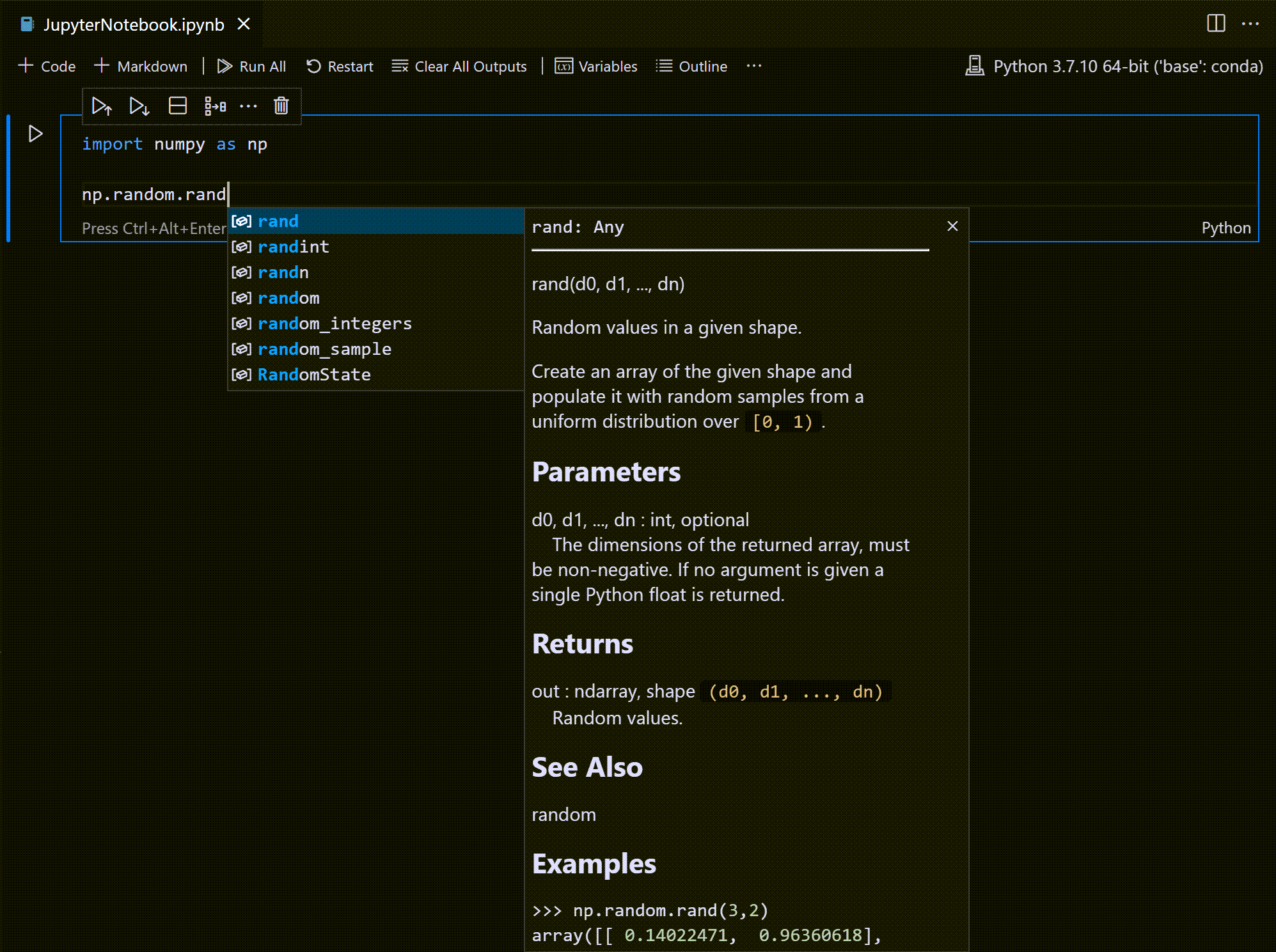

- #INSTALL JUPYTER NOTEBOOK WINDOWS INSTALL#
- #INSTALL JUPYTER NOTEBOOK WINDOWS FULL#
- #INSTALL JUPYTER NOTEBOOK WINDOWS CODE#
- #INSTALL JUPYTER NOTEBOOK WINDOWS PLUS#
Then select ‘SSH interpreter’ and choose ‘Existing server configuration’. If you want to use an interpreter on the remote server, you can figure the interpreter by naviating to Pycharm > Preferences > Project Interpreter…, then select the wheel button next to your current interpreter and select ‘Add…’. Here, I cloned my repo on the remote server, and I’m accessing a csv file with the pandas library. You should now be able to access data on the remote server in your Jupyter notebook. Paste your url and token in the field for ‘Configured Server’. Open a new Jupyter notebook file and select ‘Configure jupyter server…’. Otherwise you might get a weird line break and your url/token might not work.
#INSTALL JUPYTER NOTEBOOK WINDOWS FULL#
Make sure you copy it all from one line - I have to make my terminal full screen for this. This will return a url and token, similar to: #replace port number with whatever port you want Then launch a jupyter notebook by running the following: Navigate to the directory where your data is located. In the terminal, SSH into your remote server, navigate to the directory where your data is, then launch a Jupyter notebook. If you want to run an interactive Jupyter notebook on a remote server in P圜harm, you’ll need to set up your Jupyter server configuration and remote Python interpreter. You can run cells by clicking the Run button in the top tool bar, or by clicking Ctrl + Enter.
#INSTALL JUPYTER NOTEBOOK WINDOWS CODE#
You should now see something like this in your browser:Ĭlick on the notebook to run your code in the browser window. Click on “Open in Browser” to launch your notebook in your web browser. You should see an Event Log window pop up in the bottom right panel. Click on the text at the bottom of your P圜harm window that says “Jupyter Server started at Open in Browser”. Let’s try launching this notebook in our browser. You can view both dataframes and arrays with SciView. This is a great feature for viewing your stored variables. Select ‘View as Dataframe’, then click on the ‘SciView’ tab on the right panel.

Next, open your Jupyter tab at the bottom of your P圜harm window, click on the variables tab, and right click on the new variable you just created called ‘data’. Add the following to a code cell and run it: Let’s check out a cool feature of P圜harm Scientific View.

Here I created and printed a variable called my_string. Add your code and click the green arrow to run the code in the cell. Click the ‘+’ button just below the Markdown cell to add a new cell. Notice that the right side panel displays a preview of your notebook. Then use Markdown formatting, such as ‘# Header’ like in my example here. In the editor next to the ‘#%’, add ‘md’ to set the cell type to Markdown. Let’s start editing our notebook by adding a Markdown cell. Here, I created a new notebook called pycharm.ipynb.

Alternatively, if you just want to create a Python script you can select ‘Python File’. Then click the ‘Install Package’ button at the bottom of the window.Ĭreate a new Jupyter notebook by navigating to File > New… and selecting ‘Jupyter Notebook’. Then type ‘jupyter’ and select jupyter from the packages list.
#INSTALL JUPYTER NOTEBOOK WINDOWS INSTALL#
Install Jupyter by selecting P圜harm > Preferences > Project Interpreter, then click the “+” button to add new packages. Here, I created a new project called ‘pycharm’ in a directory on my desktop and selected Python 3.7 as my interpreter. If this is your first time developing in Python, I recommend going with the latest version 3.8.3.Ĭreate a new project in P圜harm and select your local Python interpreter. Install Python if you don’t already have it - you’ll need an interpreter in order to use P圜harm! Be aware that Python 2 and Python 3 are different in terms of syntax - don’t worry, you can load either version in P圜harm when you start a new project.
#INSTALL JUPYTER NOTEBOOK WINDOWS PLUS#
Plus P圜harm Professional is free for students! Install P圜harm.I highly recommend installing P圜harm Professional because you get more features like SciView that are awesome for data science.


 0 kommentar(er)
0 kommentar(er)
